WASHINGTON, Jan.18 (APP):Top economics and undergraduates and faculties from seven countries in South Asia, including Pakistan, will meet in Bangladesh for a regional summit beginning on Thursday to discuss how greater integration could help regional countries achieve the Sustainable Development Goals.
The 14th South Asia Economic Students’ Meet (SAESM) in Chittagong will discuss economic avenues towards the realization of a more integrated South Asia, a region that houses more than half of the world population but has failed due, mostly due to political problems.
The participants from Afghanistan, Bangladesh, Bhutan, India, Nepal, Pakistan, and Sri Lanka will engage in vigorous academic competitions and research presentations on South Asia’s development opportunities under the theme of regional integration in South Asia, according to a statement issued by the World Bank here.
The meet will also include discussions by professors and World Bank experts on how greater regional integration in South Asia can help countries achieve the Sustainable Development Goals (SDGs).
“South Asia is a region with immense potential and youthful energy waiting to thrive,” said Selim Raihan, SAESM Organizer for Bangladesh and Executive Director for the South Asia Network on Economic Modeling (SANEM). “Building trust among neighbors through students can help lay the foundation for lasting relationships that will benefit growth, poverty reduction and prosperity in the future.”
Hosted this year by SANEM, participants come from a variety of South Asian universities including Dhaka University (Bangladesh), Delhi University (India), Lahore University of Management Sciences (Pakistan), University of Kabul (Afghanistan), Royal Thimphu College (Bhutan), and Tribhuvan University (Nepal).
The summit will have essay presentations and defense by students on their essays submitted for SAESM, a quiz on economic knowledge, as well as a “budding economist competition” that selects the brightest young economist through the best written and oral defense.
Sanjay Kathuria, Lead Economist for the World Bank, said that regional integration in South Asia is a work in progress, but there are many grounds for optimism, including the growing realization that most of the gains from regional integration remain under-exploited.
“To help realize some of these gains, the WBG is supporting country governments in South Asia to deepen cooperation with their neighbors in several areas including energy, trade and investment, and connectivity,” he said.
SAESM was piloted in 004 by a group of university professors and since then it has been hosted rotationally by organizers in India, Bangladesh, Nepal, Pakistan, Sri Lanka, and Bhutan. Afghanistan sent its first batch of delegates in 2014.
Recognizing its unparalleled efforts in facilitating regional academic and cultural exchange, the World Bank Group has supported SAESM for many years in the forms of financing, logistical support, external communications as well as speeches and competitions.
“When we started SAESM, our objective was to bring together brilliant young economists from across South Asia and engage them in intensive academic exchange. Over the years SAESM has itself “graduated” numerous dazzling talents and sent them worldwide,” said Raihan.
ہوم International News South Asian students, including from Pakistan, meet to discuss regional integration



